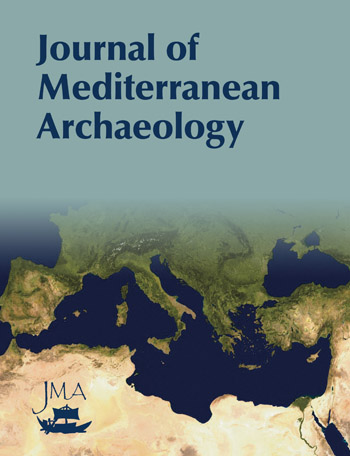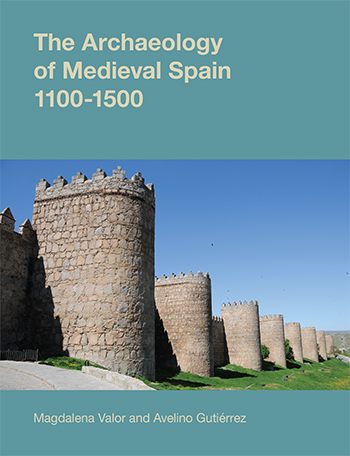The Archaeology of Stari Bar
The Evolution, Dissolution and Reinvention of an Adriatic Town
Sauro Gelichi [+–]
University Ca’ Foscari
Since 2005, Sauro Gelichi has been full professor at the University of Ca’ Foscari, Venice. A founding member of the Society of Italian Medieval Archaeologists, he served as its secretary until 2000 and held the presidency between 2000-04. He is currently President of the Association Internationale por l’Etude des Ceramiques Medievales Mediterraneeanes and since 201, of the academic body ‘Consulta delle Archeologie Postclassiche as well as serving on the editorial board of a number of academic journals and book series. His research interests centre on the archaeology and history of medieval settlement (urban and rural) and medieval material culture, with particular reference to the production of pottery. He has been director of many archaeological excavations in Italy and of archaeological missions in Syria (1999-2002), Turkey (20020, and has been the director of the archaeological mission in Montenegro (Stari Bar) since 2004.
Systemic archaeological fieldwork and research have been underway at the site of Stari Bar since 2004 as a result of a major joint project, with European funding, between the University Ca’ Foscari (Venice), the Comune (City Authority) of Bar and the University of Koper (Slovenia). This volume provides a digest and analysis of the decade of work that has ensued, exploring the trajectory of a town in modern-day Montenegro that was virtually abandoned towards the end of the 19th century. The history and archaeology of this town offers exciting scope not only for ongoing archaeological research but also for the local communities to understand and trace their own past.
The site of Stari Bar (ancient Antivari) truly formed a crossroads or point of intersection for many peoples and cultures and the book traces its historical and settlement evolution from the period prior to Rome, through the late antique period, Middle and Late Byzantine phases, its establishment as an episcopal seat and development as a city the late Middle Ages and its significant transformation into a Venetian colony and its equally significant transformation into an outpost of the Ottoman empire following conquest by the Turks. Moving to modern times, the book provides a detailed analysis of the war of liberation which coincided with the demonstrable demise of the city within the walls and the shift of settlement focus to the coast. The end result of this history is what can be termed a ‘ghost town’ — a site with a rich and varied architectural heritage and a site with an equally rich, but far less visible, buried archaeological resource. The book concludes by examining the questions of how this heritage should be used, how the local population interact with it, and how it should continue to be studied.
Table of Contents
I. City at the Crossroads
This chapter argues that Stari Bar formed a crossroads or point of intersection for many peoples (or, powers) and outlines the multiple ‘pasts’ of this Adriatic town.
This chapter continues the exploration of multiple pasts, examining the connections between the many powers that have controlled Stari Bar over the centuries and the town’s inhabitants.It employs archaeological and anthropological theory to observe and assess these connections examining various paradigms — urbanism, building typologies, lifeways, economics and material culture in doing so.
II. Historical and Settlement Evolution
This chapter traces the historical and settlement evolution of Antivari (Stari Bar) over time. After an outline contextualization of the site prior to Rome, the evidence for the late antique(4th-7th centuries AD) period is discussed, followed by coverage of the Middle and Late Byzantine phases, the rise of Antivari as an episcopal seat and the, its development into a city in the late Middle Ages.
Chapter 4 discusses the transformation of the city under Venetian rule, a moment when the city achieved a very precise physiognomy, being endowed by powerful city walls and characterized by the presence of a series of Venetian type architectural forms. This ‘Venetian’ fashion is also reproduced in various components of the city’s and regions’ material culture, such as domestic items like glass and pottery.
This chapter marks the conquest of Antivari by the Turks, a further notable point of urban transition and following which the city seems to lose part of its original functions, almost closing in on itself, with a level of ruralisaton evident such as in the introduction of oil presses within many house interiors. The Ottoman period enables us to see the slow processes by which Balkan-style forms and customs are adopted; we also note during this period how the urban community once more gained an international outlook (the fruit of early globalisation) in the second half of the 19th century.
This chapter concludes the urban trajectory of the city with a detailed analysis of the war of liberation which coincided with the demise of the city within the walls and the shift of settlement focus to the coast. This transfer is evident in the renewed functions of the port and in western (including Italian) investment here in the first half of the 20th century.
III.Disclosing and Understanding the Ghost Town
The final chapter focuses on the question of heritage, exploitation, survival, loss and study, drawing on archaeological input from the first decade of the current century, characterized by collaboration between Italian and Montenegran teams employing a range of methods and theoretical approaches to examine the built and buried past. The chapter concludes by exploring the relationship between the local population and their archaeological heritage.







